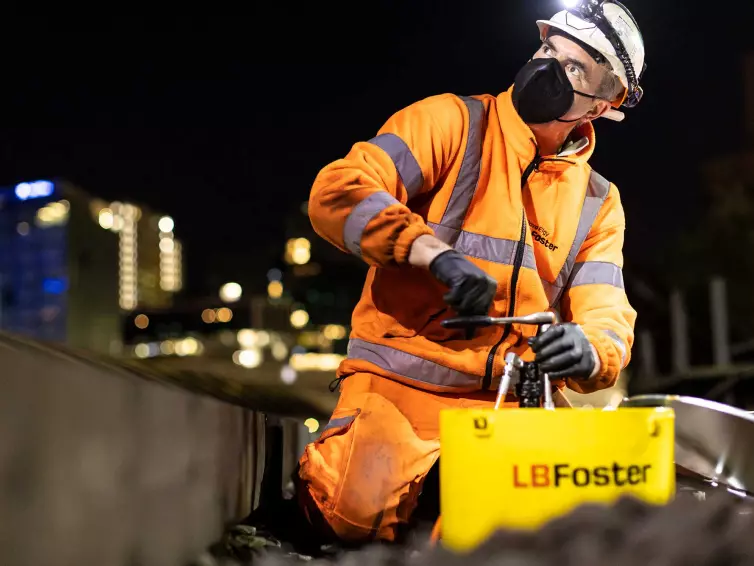The benefits of switch protection for safer, quieter, easier journeys
- Apr 03, 2020
- Rail
Researching innovative applications for our friction modifiers has led to new thinking about how to increase network asset life and reduce costly track maintenance.
This is an extract of an article first published in The Journal.
Switches and crossings are an integral part of global rail infrastructure, used by vehicles to change from one track to another. As safety critical assets it is vital they are well maintained and suffer minimal damage. In general terms, a switch represents a location of a geometrical track deviation (compared with plain line). A vehicle responds to a track deviation with an angle of attack (AOA) at the leading wheelset of each bogie, resulting in the generation of lateral forces and possible flange contact.
Switch blades can suffer from plastic flow leading to rail contact fatigue (RCF) crack formation, due to excessive flange contact in an area between two to five metres from the switch tip. Welding is required to repair defects. These costly repairs can only be repeated a number of times, leading to premature replacement of switch blades.
UK study
A study was undertaken of a specific switch location in the UK. The switch life was significantly reduced due to fatigue failure approximately two metres from its tip. Between 2004 and 2012 the high-rail half-set was replaced every 15-18 months, with intermediate weld repairs approximately every four months.
Causes of the damage
It was clear from the initial observation of the defect that the lateral loading of the switch was excessive and that this was a fatigue issue.
Discussions with the UK’s rail infrastructure owner Network Rail revealed that this was a known issue at a number of sites and that it was thought to be a design issue with a particular switch layout.
Damage normally occurred when trains were travelling in the trailing direction. The radius of curvature reduced on the approach to the switch tip, so the reduction in the angle of attack was insufficient to counteract the reduced cross sectional area of the switch rail resisting the lateral loads.
The increasing load caused by the contact forces between the wheel/flange and switch rail created a fatigue cycle leading to a horizontal failure approximately 15mm below the top of the switch rail. Once the crack initiated, it expanded horizontally and turned to the vertical at the end of the crack closest to the switch tip. The horizontal growth continued away from the switch tip until the top of the switch rail broke off.
A permanent solution L.B. Foster’s KELTRACK Top of Rail (TOR) friction modifier system was installed on the approach to the specific switch layout so the steering of the wheelsets was optimised through the whole switch. The switch layout has been defect free for 26 months following the installation of the KELTRACK system by L.B. Foster. After a month without friction modifier the first failure was reported. Since the repair was undertaken and the installation has been maintained using friction modifier there have been no further failures.
Benefits
The key benefit of using KELTRACK Top of Rail friction modifier include:
equipment failure halted
net value savings of approximately £40,000
reduction in repairs including 650 per cent increase in asset life
switch life increase from 18 months to 11 years
less inspection time
fewer man hours on track
reduced delays
payback time estimated at 11 months.
Benefits for the network
Since the first installation, a number of other UK sites with similar repair issues have been treated using KELTRACK TOR friction modifier. As Network Rail moves towards a greater focus on efficiency, TOR friction modifiers could be of benefit to the wider network. The original test site is demonstrating returns of £12,000 pa and at another site savings are estimated at £100,00 pa. Conclusion
KELTRACK TOR friction modifier system can give a significant improvement in the life of switches. It is expected that the improvement would be at least 650 per cent. This is achieved by reducing the angle of attack between the wheel and the rail through the switch so that the contact forces are greatly reduced or eliminated entirely.

